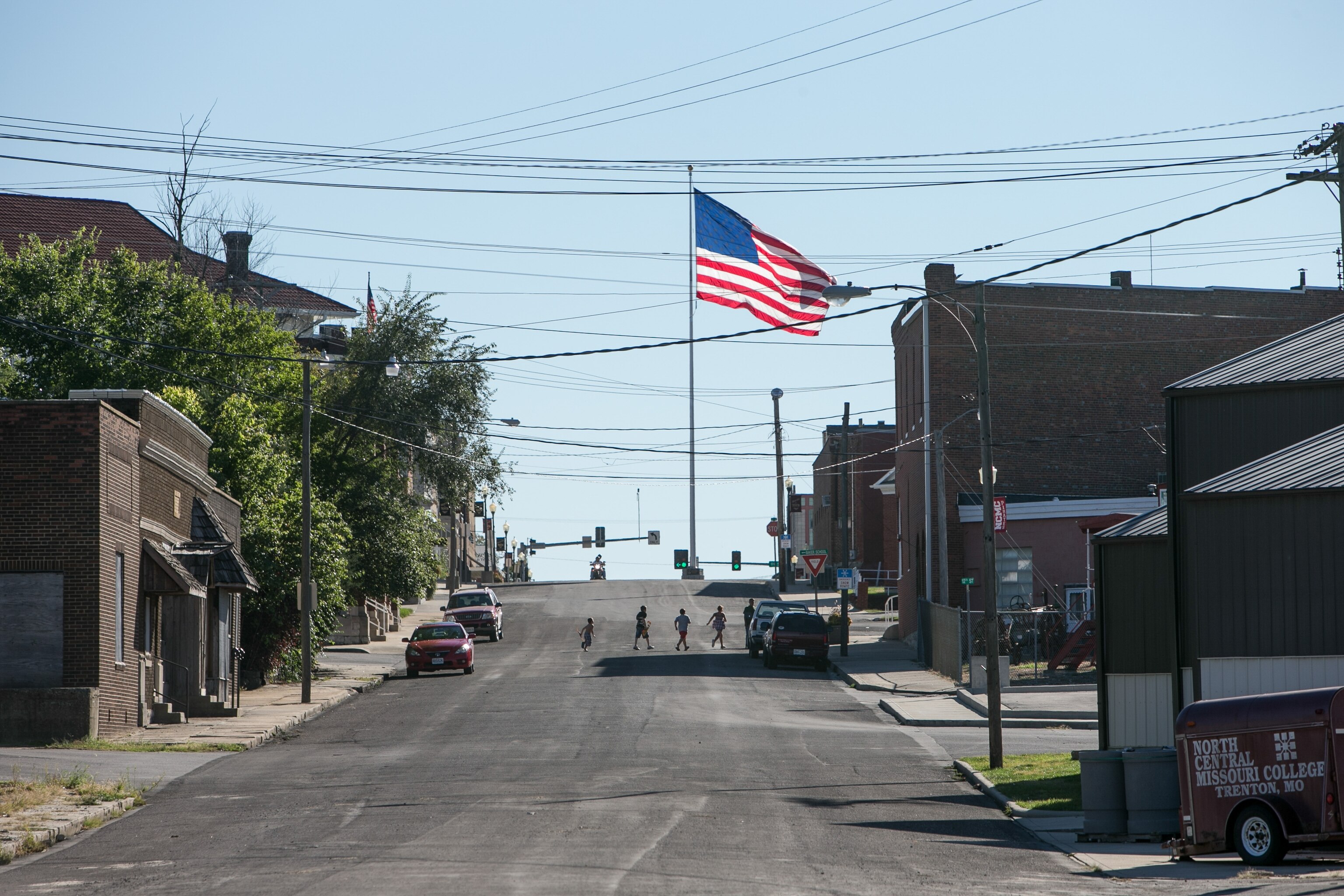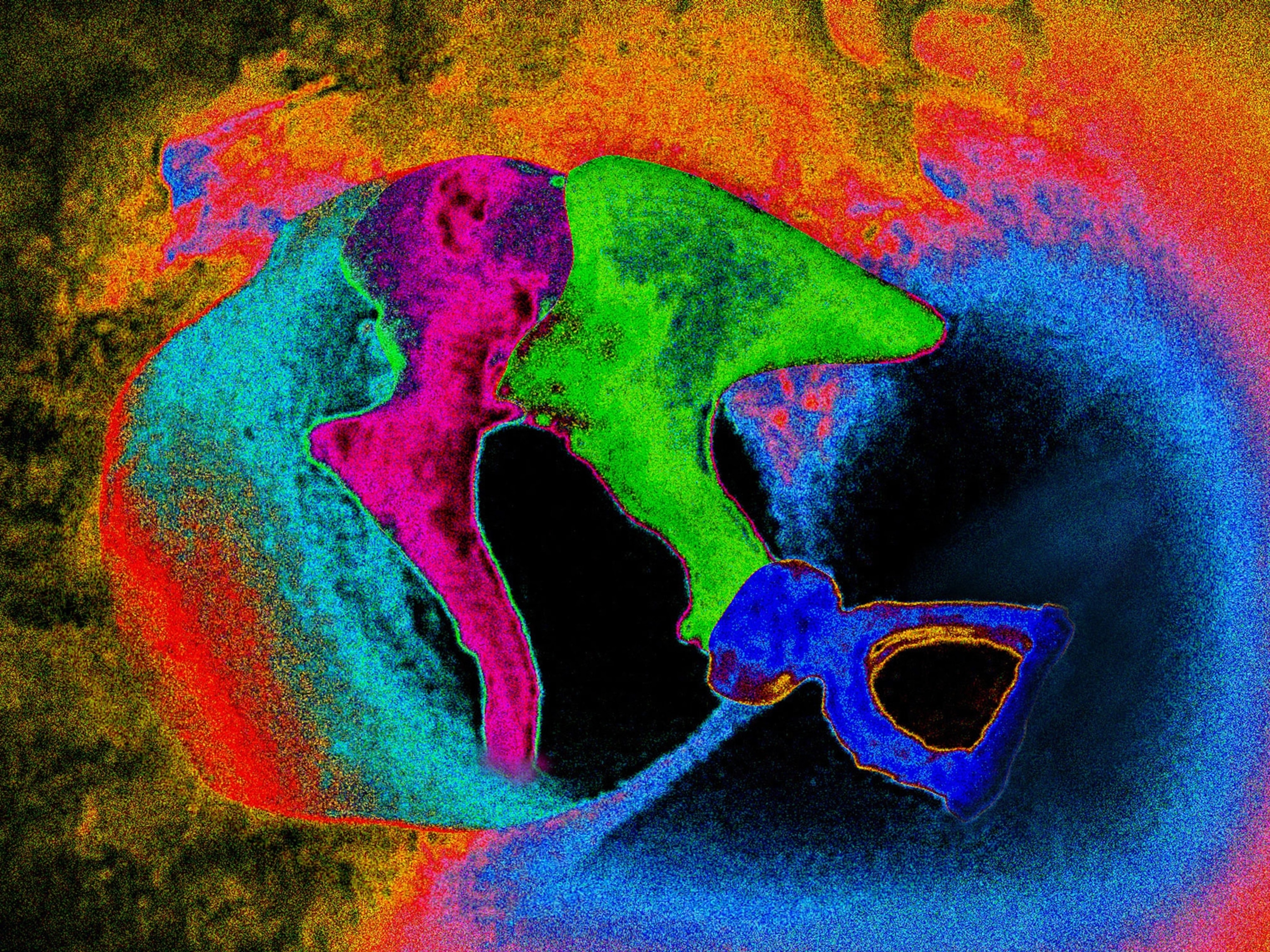



Stories From Rural America: Pictures Making Sense
Like many small towns in America, the downtown business district of Trenton, Missouri, struggles against newer, shinier establishments “out by the highway.” Families fracture from unemployment, health crises, and the stresses of caring for aging parents. All of these rural places suffer brain drain as children grow up to become just another export crop, like the ripening corn that covers hills and river bottoms around here.

Yet against the odds these towns endure. The friendly people of Trenton have invited us in, many of them willing to open their lives and homes to a few dozen camera-toting strangers. This is the backdrop for the Missouri Photo Workshop, which has invaded 44 small towns across the state each autumn since 1949 in a quest to document and make sense of small-town Missouri.
We have photographed places like Troy, Clinton, Forsythe, Chillicothe, Boonville, and Fulton. But more than visually recording these towns, this workshop teaches a new generation of documentary photographers how to purposefully tell stories with a camera by immersing them 24/7 for nearly a week in the lives and livelihoods here. Some photographers sleep in the homes of their subjects.

More than 2,500 photographers spanning three generations have completed this course, started by Cliff and Vi Edom, and inspired by the historic work of the 1930s Farm Security Administration documentary photographers. Led by Roy Stryker, the FSA corps included Gordon Parks, Dorothea Lange, Walker Evans, Russell Lee, and Arthur Rothstein. Stryker, Lee, and Rothstein have all been faculty members here.
(View pictures from the FSA collection at the Library of Congress.)
Agriculture dominates in Trenton, corn harvest is under way, and several stories this week focus on farms and farmers. We see emerging portraits of the mayor, county sheriff, and high school football coach. Like in any community children and families struggle with disability, cancer, and social stigma. We see all this in Trenton workshop stories the photographers have found themselves.

So why teach this kind of deep visual storytelling when digital images are ubiquitous, and everyone with a phone has become a photographer?
Workshop co-director David Rees says, “We live in an age where we are being assaulted by virtually endless visual stimuli. It may be more important now than ever to improve our skills as narrative storytellers to help people make sense of this world where random images are everywhere.”
The late Howard Chapnick, founder of Black Star Images, mentor to many photographers, and for years a Missouri Workshop faculty member, wrote in his book Truth Needs No Ally that documentary photography “saves the past from becoming the detritus of history, reflects the present, and anticipates the future.”
“It helps us to understand the constantly changing social and physical universe mankind inhabits.”
On Saturday the people of Trenton will join us for a public 300-print exhibit at the high school. Next week in a final posting I’ll highlight the outstanding picture stories from the week.
View previous stories from the Missouri Photo Workshop.
National Geographic executive editor Dennis Dimick realized he is in his 17th year as a faculty member here, not 16th as reported earlier this week. Follow Dennis on Twitter, Instagram, and Flickr.
Related Topics
You May Also Like
Go Further
Animals
- This ‘saber-toothed’ salmon wasn’t quite what we thoughtThis ‘saber-toothed’ salmon wasn’t quite what we thought
- Why this rhino-zebra friendship makes perfect senseWhy this rhino-zebra friendship makes perfect sense
- When did bioluminescence evolve? It’s older than we thought.When did bioluminescence evolve? It’s older than we thought.
- Soy, skim … spider. Are any of these technically milk?Soy, skim … spider. Are any of these technically milk?
- This pristine piece of the Amazon shows nature’s resilienceThis pristine piece of the Amazon shows nature’s resilience
Environment
- This pristine piece of the Amazon shows nature’s resilienceThis pristine piece of the Amazon shows nature’s resilience
- Listen to 30 years of climate change transformed into haunting musicListen to 30 years of climate change transformed into haunting music
- This ancient society tried to stop El Niño—with child sacrificeThis ancient society tried to stop El Niño—with child sacrifice
- U.S. plans to clean its drinking water. What does that mean?U.S. plans to clean its drinking water. What does that mean?
History & Culture
- Meet the original members of the tortured poets departmentMeet the original members of the tortured poets department
- Séances at the White House? Why these first ladies turned to the occultSéances at the White House? Why these first ladies turned to the occult
- Gambling is everywhere now. When is that a problem?Gambling is everywhere now. When is that a problem?
- Beauty is pain—at least it was in 17th-century SpainBeauty is pain—at least it was in 17th-century Spain
- The real spies who inspired ‘The Ministry of Ungentlemanly Warfare’The real spies who inspired ‘The Ministry of Ungentlemanly Warfare’
Science
- Here's how astronomers found one of the rarest phenomenons in spaceHere's how astronomers found one of the rarest phenomenons in space
- Not an extrovert or introvert? There’s a word for that.Not an extrovert or introvert? There’s a word for that.
- NASA has a plan to clean up space junk—but is going green enough?NASA has a plan to clean up space junk—but is going green enough?
- Soy, skim … spider. Are any of these technically milk?Soy, skim … spider. Are any of these technically milk?
Travel
- What it's like to hike the Camino del Mayab in MexicoWhat it's like to hike the Camino del Mayab in Mexico
- Is this small English town Yorkshire's culinary capital?Is this small English town Yorkshire's culinary capital?
- This chef is taking Indian cuisine in a bold new directionThis chef is taking Indian cuisine in a bold new direction
- Follow in the footsteps of Robin Hood in Sherwood ForestFollow in the footsteps of Robin Hood in Sherwood Forest




